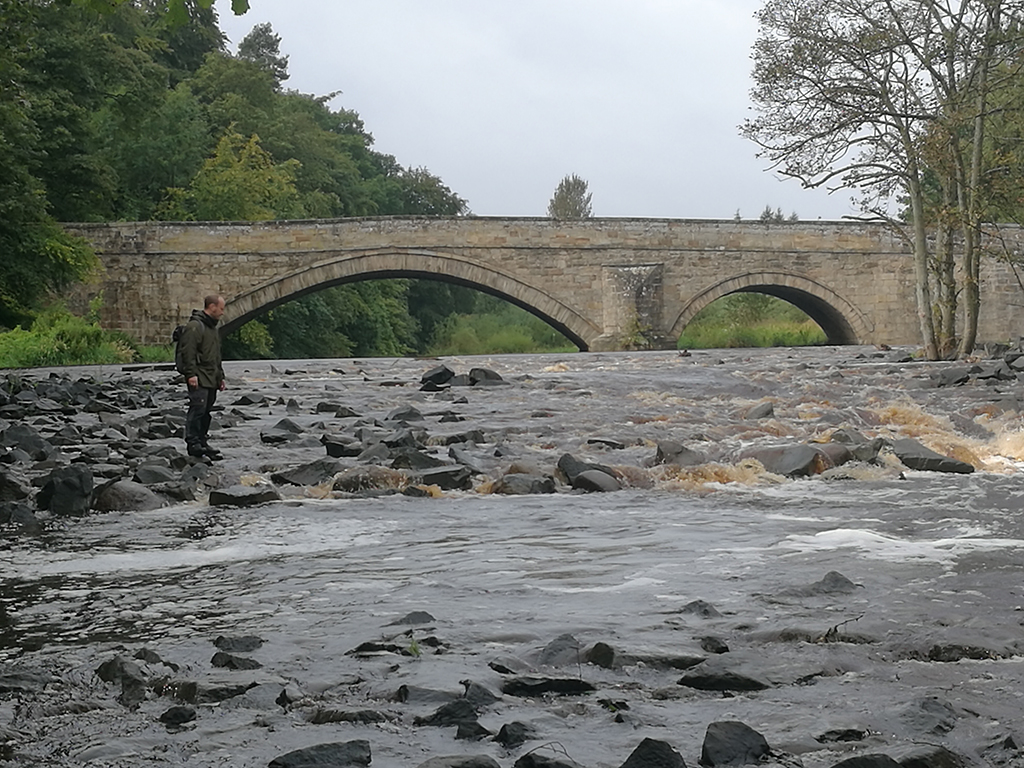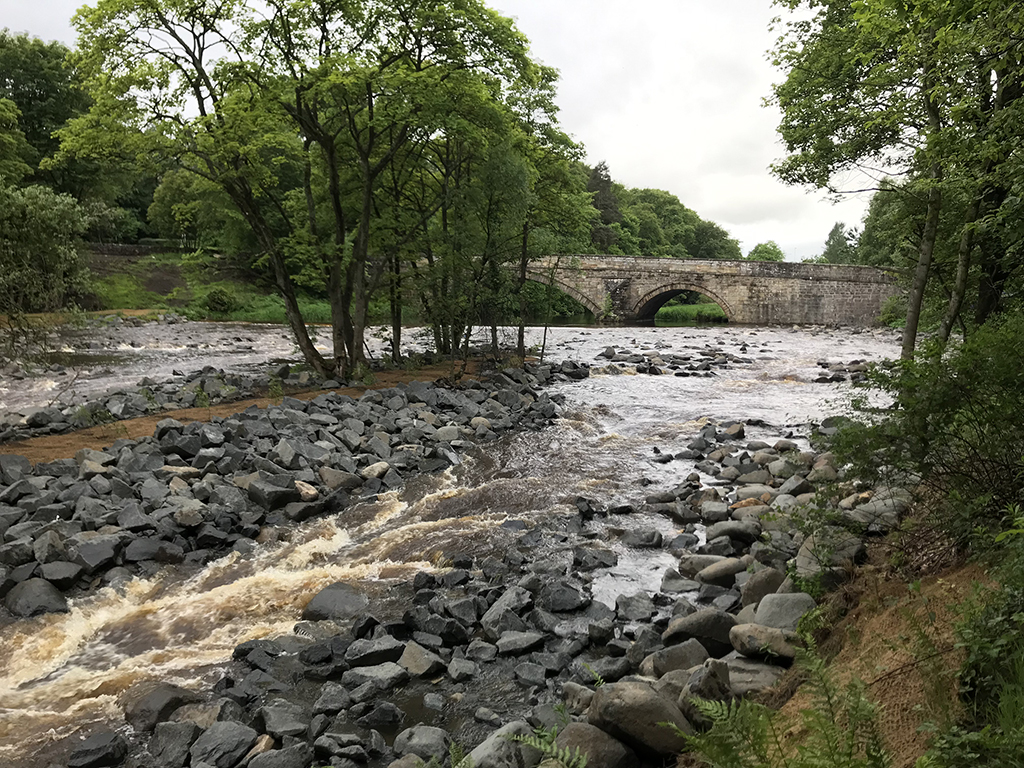
UK’s largest rock ramp is a stepping stone for fish
Today marks the official opening of the UK’s largest rock ramp.
Situated on the River Almond at Howden Bridge Weir, the 85m x 50m ramp construction will play a key role in connecting the lower and upper reaches of the River Almond, so fish species can travel upstream and enrich the wildlife ecosystem of the river.
Over 9000 tonnes of rock, much of it recycled from other developments in West Lothian has been crafted to facilitate a fish pass over Howden Weir which for the past 200 years has created a barrier to fish species trying to return to the upper reaches of the Almond to spawn.
The Howden rock ramp is one of eight capital projects on the River Almond designed to reinvigorate the ecosystems of these rivers to the benefit of the wildlife and communities connected to them.
At Howden Bridge the weir was originally built to power the New Calder Paper Mill which produced wrapping paper from the 1800s. Over three months the ramp was built between existing islands across the face of the weir to form a waterfall-like structure made up of pools, runs and easy leaps to help fish over the weir. This easing solution will help preserve this piece of industrial heritage and taking into account the length of river involved is the largest rock ramp in the UK.
In addition, a programme of smaller scale works and community engagement has already had a huge impact in conservation on the river and widening access to the public.

The Howden Rock Ramp on the River Almond at Howden Bridge Weir (Photo: Forth Rivers Trust)
Tree planting, river bank restoration and riverside furniture repair work has been delivered by a mixture of professional contractors and enthusiastic volunteers. Activities delivered by the RiverLife team have included guided walks, invasive species identification and documentation and the popular primary school education programme Fish in the Classroom.
RiverLife: Almond & Avon is a partnership project between the Forth Rivers Trust, West Lothian Council & City of Edinburgh Council, funded by the National Lottery Heritage Fund, The Scottish Government, SEPA Water Environment Fund, West Lothian and City of Edinburgh Councils.
Director of the Forth Rivers Trust Alison Baker said: ‘The completion of this key work for the improvement of conditions for migratory fish on the River Almond is momentous and the progress made on other projects this year is very exciting. The RiverLife project has only been delivered due to 10 years of hard work by the Trust, SEPA and other organisations including West Lothian Council.
‘This will help the overall ecology of the river by making it easier for fish to access spawning areas further up, supporting other wildlife and making the populations of iconic species such as Atlantic salmon more sustainable.
‘It’s not just fish species and supporting wildlife such as invertebrates, otters and kingfishers that will benefit. The Howden Rock Ramp is an opportunity for the local community to engage with the river which is at the heart of Livingston. Whilst considering the heritage of the industrial past, we have created something which is reflective of Livingston and West Lothian today; respecting the past but looking towards a future which connects people with nature and provides a sense of place and wellbeing.’
West Lothian Council leader, Lawrence Fitzpatrick added: ‘The wellbeing of our rivers, is not just about the quality of water but also about the extent to which they support healthy populations of wildlife. I am delighted to be here today to formally acknowledge a milestone in the project to assist the migration of salmon and other species up river with completion of a new rock ramp here at Howden Bridge.

Fish and wildlife will benefit from the rock ramp (Photo: Forth Rivers Trust)
‘I would like to thank the Scottish Government and National Lottery Heritage Fund for the investment each has made in this far-sighted project and acknowledge the significant efforts of both SEPA and the Forth Rivers Trust, without whom this project would not have been realised.’
SEPA’s Water Environment Fund (WEF) spokesperson Francis Hayes, said:’Every day SEPA works to protect and enhance Scotland’s environment, helping communities and businesses thrive within the resources of our planet, using partnerships as a principle way of delivering outcomes.
‘Completion of the rock ramp at Howden Bridge is another step in a long term project to improve fish migration, wildlife habitats and community engagement along the River Almond. This new route for fish is positive proof of what can be achieved in local rivers by good partnership working and we look forward to the project’s next exciting phase.
‘Local people are benefiting from the RiverLife project through future improvement to angling opportunities and by the work of the Forth Rivers Trust to engage and connect communities to the river with educational and volunteering activities.’
For those who would like to know more or get involved in volunteer activities they can follow the projects development and get involved at www.river-life.org.uk.
TAGS

